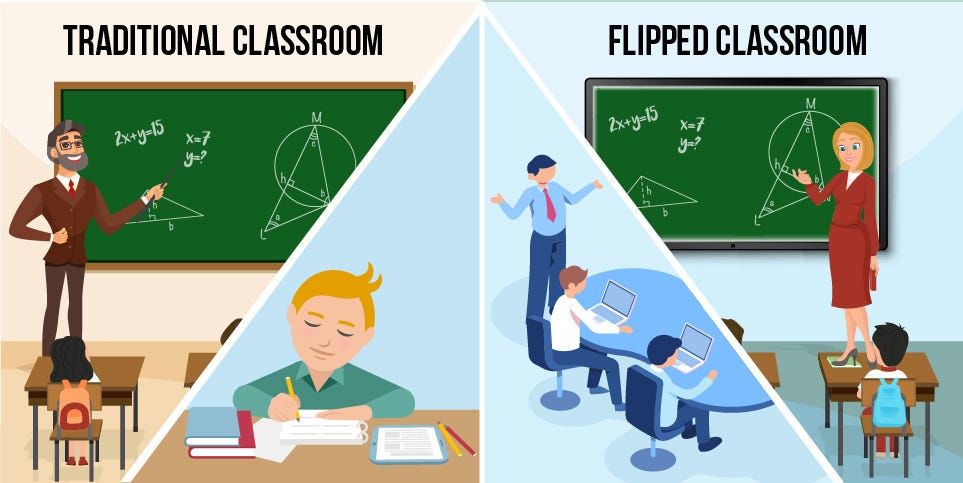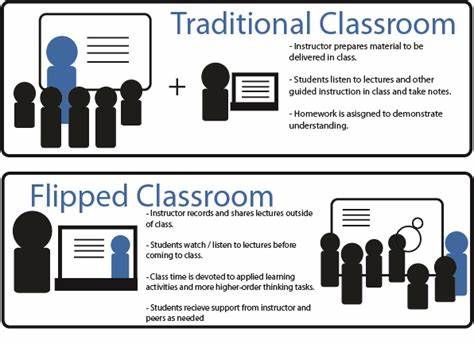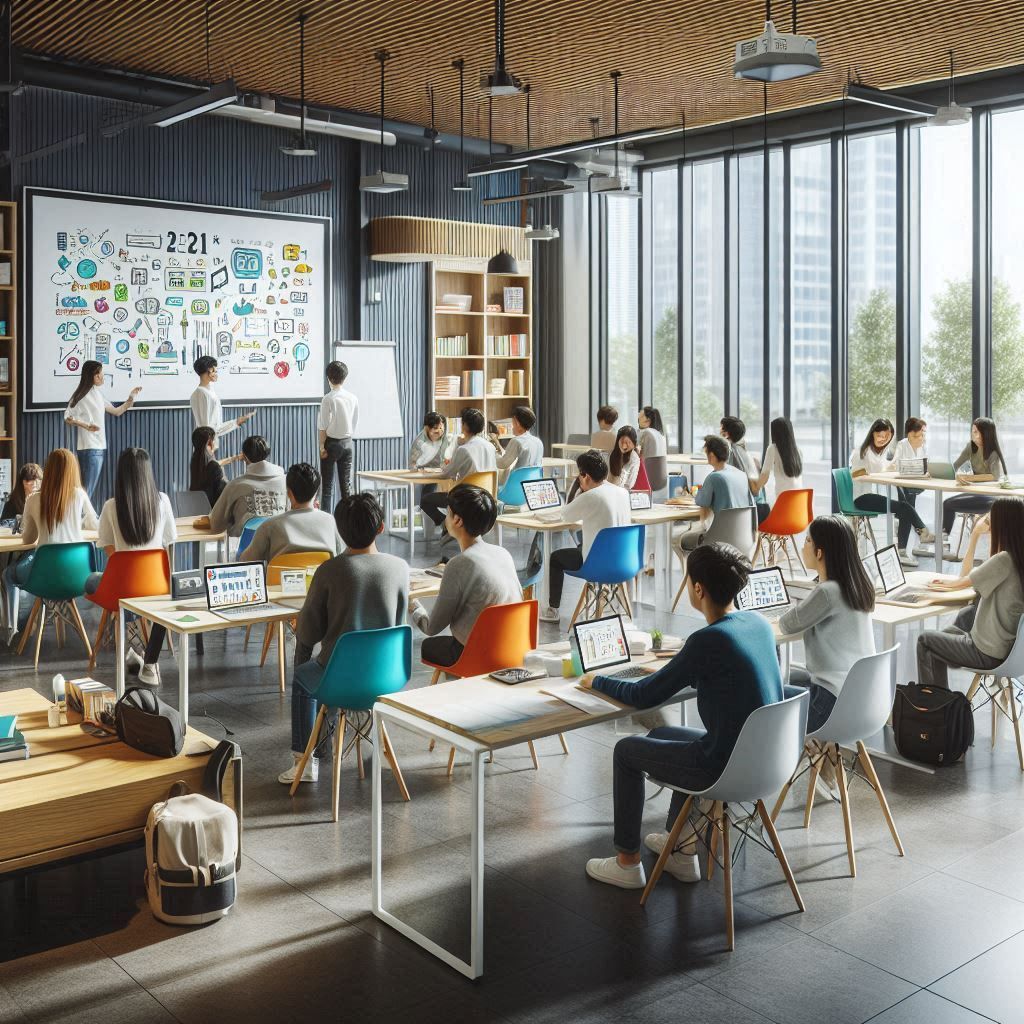In a traditional classroom a teacher usually delivers a presentation that introduces students to new concepts and learning materials. Students mostly listen to the presentation, at home students review the notes to learn the material presented in class and complete some homework. Thus, there is a teaching phase in the class (when the material is delivered) and a learning phase out of class (when students engage more actively with the material).
In a flipped classroom this framework is reversed: students first discover new material at home, out of class (through assigned reading, videos etc.) and the lesson can be dedicated to practical activities which allow the students to actively engage with the material in the presence of the teacher and often in collaboration with other students.
So the role of teachers shifts from the transferring knowledge to guiding the students in mastering new skills and understanding when and how to use the information they learn.
If you are practicing flipped classroom approach in education what major differences do you see?



